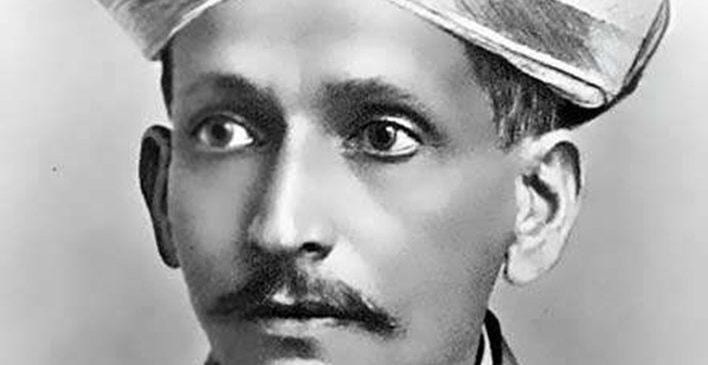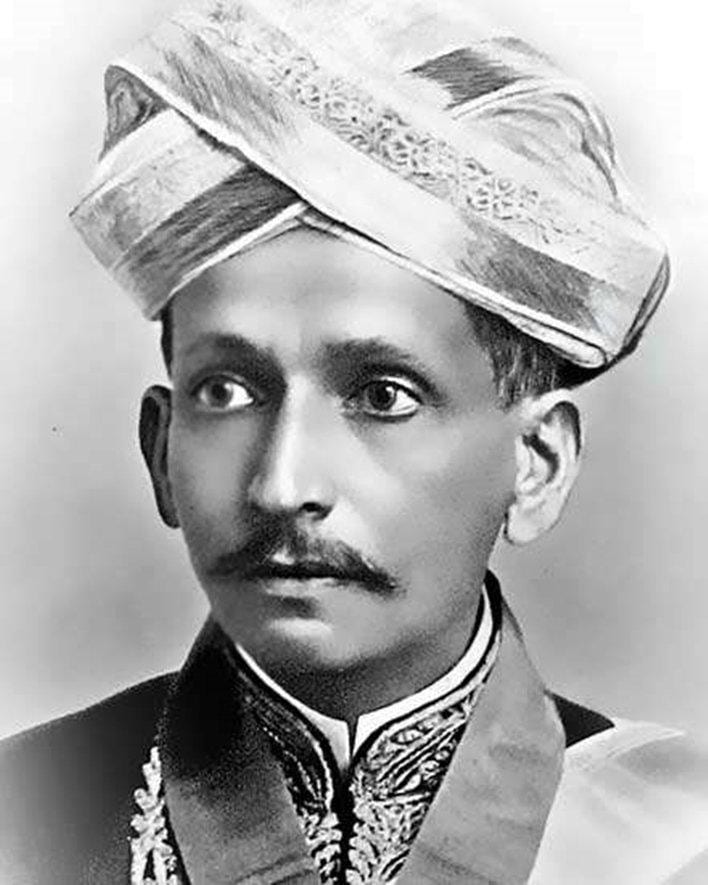

Sir Mokshagundam Visvesvaraya KCIE FASc also spelled as Sir Mokshagondam Visweswarayya, popularly known as Sir MV (15 September 1861 – 12 April 1962) was an Indian civil engineer and statesman and the 19th Diwan of Mysore, who served from 1912 to 1919. He received India’s highest honour, the Bharat Ratna, in 1955. He was knighted as a Knight Commander of the British Indian Empire (KCIE) by King George V for his contributions to the public good. 15 September is celebrated as Engineer’s Day in India, Sri Lanka and Tanzania in his memory. He is held in high regard as a pre-eminent engineer of India.
He was the chief engineer responsible for the construction of Krishna Raja Sagara dam in North-West suburb of Mysuru city and chief engineer of flood protection system for the city of Hyderabad.
Early years
Mokshagundam Visvesvaraya was born on 15 September 1861 in Muddenahalli village (now located in Chikkaballapura district, but part of Kolar district at the time of his birth) in princely state of Mysore (now Karnataka), India. His father, Mokshagundam Srinivasa Sastry, was a school teacher and a noted Sanskrit scholar, while his mother, Venkatalakshamma, was a homemaker. His parents were from Mokshagundam, a village of Prakasam district in Andhra Pradesh.
Visvesvaraya lost his father at the age of 12. He got his primary education at Bandahalli Primary School, Chikkaballapur, and attended a high school in Bangalore. In 1881, he received BA degree from Central College, Bangalore (then affiliated to University of Madras). He then enrolled at College of Engineering, Pune and received LCE (Licentiate in Civil Engineering), which is equivalent to DCE (Diploma in Civil Engineering), from University of Bombay to which the college was affiliated then.
Career
Visvesvaraya took a job with the PWD of Bombay and later was invited to join the Indian Irrigation Commission. He implemented an extremely intricate system of irrigation in Deccan.
He had designed and patented a system of automatic weir water floodgates that were first installed in 1903 at Khadakvasla Reservoir near Pune. These gates were employed to raise flood supply level of storage in reservoir to the highest level likely to be attained without causing any damage to the dam. Based on the success of these gates, the same system was installed at the Tigra Dam in Gwalior and Krishna Raja Sagara (KRS) Dam in Mandya/Mysore, Karnataka.
In 1906–07, Government of India sent him to Aden to study water supply and drainage systems. The project prepared by him was implemented in Aden successfully.
Visvesvaraya achieved celebrity status when he designed a flood protection system for city of Hyderabad. He was instrumental in developing a system to protect Visakhapatnam port from sea erosion. This dam created the biggest reservoir in Asia when it was built. Visvesvaraya gave his valuable technical advice for the location of Mokama Bridge over Ganga in Bihar. At the time, he was over 90 years old.
He was called “Father of Modern Mysore State”. During his service with Government of Mysore state, he was responsible for founding of (under the patronage of the Mysore government) Mysore Soap Factory, Parasitoid Laboratory, Mysore Iron & Steel Works (now known as Viswesvarayya Iron and Steel Limited) in Bhadravathi, Sri Jayachamarajendra Polytechnic Bangalore, Bangalore Agricultural University, State Bank of Mysore, Century Club, Mysore Chamber of Commerce (Federation of Karnataka Chambers of Commerce & Industry), apex Chamber of Commerce in Karnataka, University Visvesvaraya College of Engineering (Bangalore) and numerous other industrial ventures. He encouraged private investment in industry during his tenure as Diwan of Mysore. He was instrumental in charting out plan for road construction between Tirumala and Tirupati.
He was known for sincerity, time management and dedication to a cause. Bangalore Press and Bank of Mysore were established during his tenure. A very important part of his nature was his love for Kannada. He set up Kannada Parishat for the upliftment of Kannada. He wanted seminars for Kannada lovers to be instituted and conducted in Kannada itself.
Visvesvaraya is known to have designed and planned the entire area of Jayanagar in South Bangalore. The foundation of Jayanagar was laid in 1959. It was one of first planned neighbourhoods in Bangalore and at the time, the largest in Asia. It is believed that locality, designed by Visvesvaraya, is one of the best-planned layouts in Asia. One of the hostels in IIT (BHU) Varanasi is named after him.